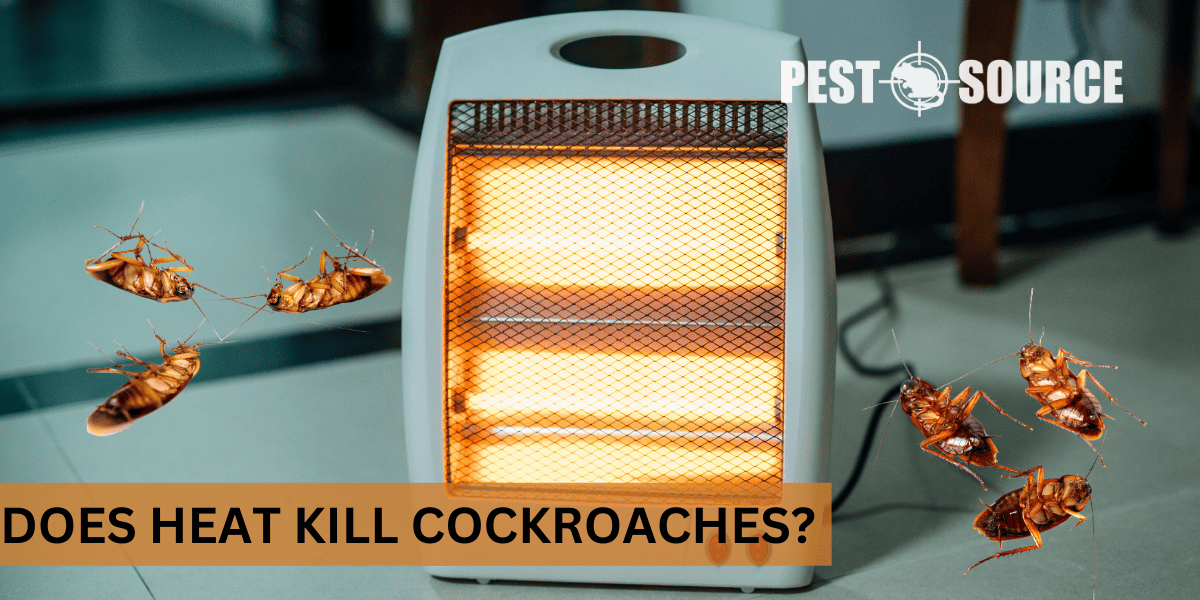Extreme heat can kill cockroaches, as temperatures above 125°F (51°C) are lethal to them. However, using heat as a control method requires specific strategies. Learn about the effectiveness and practicality of heat treatment for cockroach extermination in this guide.
POINTS
- Heat is an effective method to kill cockroaches, with temperatures above 125°F (51°C) necessary to kill adults and nymphs, and at least 140°F (60°C) required to eradicate eggs.
- Different species of cockroaches and their life stages have varying levels of heat tolerance, with eggs being the most resistant and adults the most susceptible.
- Professional heat treatments are thorough and can reach areas DIY methods cannot, but cockroaches can sometimes escape to cooler areas, making complete eradication challenging.
- Heat influences cockroach behavior, causing them to become more visible as they move away from high temperatures, affecting their feeding, breeding, and activity patterns.
- Integrating heat treatments into a comprehensive pest management plan, including preparation, follow-up, and preventive measures, is crucial for effectively controlling and preventing cockroach infestations.
Understanding the Science and Temperature Thresholds
Cockroaches are notorious for their resilience and adaptability, making them one of the most challenging pests to eradicate. However, like all living organisms, they have their vulnerabilities. Heat is one such weakness, and it can be used as an effective tool in the battle against these pests. Let’s explore the science behind using heat to kill cockroaches and understand the temperature thresholds necessary for this method to be successful.
Specific Temperatures Necessary to Kill Cockroaches
Cockroaches can withstand a range of temperatures, but there are specific heat thresholds that can be lethal to them. Studies have shown that exposing cockroaches to temperatures above 125 degrees Fahrenheit (51 degrees Celsius) for a sustained period can kill both adults and nymphs. The eggs, however, are more resilient and require a higher temperature or longer exposure time. A temperature of 140 degrees Fahrenheit (60 degrees Celsius) for one to two hours is typically needed to ensure the extermination of cockroach eggs.
Variations Among Different Species
It’s important to note that different species of cockroaches may have varying levels of heat tolerance. For example, the German cockroach, one of the most common household pests, may succumb to heat more quickly than the Oriental cockroach. Understanding these differences is crucial when considering heat treatment as a pest control strategy.
Susceptibility of Different Life Stages of Cockroaches to Heat
Cockroaches go through multiple life stages: egg, nymph, and adult. Each stage has a different level of susceptibility to heat:
- Eggs: The most protected stage, requiring higher temperatures or longer exposure times to be effective.
- Nymphs: These juvenile roaches are less resistant to heat than eggs but may still require significant exposure to lethal temperatures.
- Adults: Generally, adults are the most susceptible to heat treatment, but they can often escape to cooler areas if given the chance.
Heat Treatment Methods and Their Effectiveness Against Cockroaches
When it comes to applying heat to control cockroach populations, there are various methods at your disposal. Some people may opt for do-it-yourself (DIY) approaches, while others might choose professional heat treatment services.
Professional Services
Professional pest control services use specialized equipment to raise the temperature of an infested area to levels that are lethal to cockroaches. These treatments are thorough and can penetrate hard-to-reach areas, ensuring that even the most hidden pests are eradicated.
DIY Approaches
For those considering a DIY approach, options include using portable heaters or heat guns to target specific areas. However, these methods are less reliable and may not achieve the uniform high temperatures needed to fully eliminate a cockroach infestation.
Effectiveness, Limitations, and Risks
Heat treatments can be highly effective when performed correctly. They offer the benefit of being a chemical-free and non-toxic solution, making them safe for use in homes with children and pets. However, limitations exist, including the potential for cockroaches to escape to cooler areas and reinfest later. Risks can include damage to heat-sensitive items in the home and, if not done properly, the possibility of not reaching the temperatures needed to kill all life stages of the cockroaches.
Comparison to Other Pest Control Strategies
When compared to chemical treatments, heat treatments have the advantage of leaving no residual chemicals and can be a single solution to an infestation. However, chemical treatments may provide longer-lasting protection against reinfestation. It’s important to weigh these factors when choosing a pest control strategy.
Adaptability of Cockroaches to Heat
Cockroaches are incredibly adaptable, and while heat treatments can be effective, these pests have been known to develop behavioral strategies to cope with extreme temperatures. This includes seeking out cooler refuges or altering their activity patterns to avoid lethal temperatures, which can sometimes make heat treatments less effective than anticipated.
The Impact of Heat on Cockroach Behavior and Infestation Dynamics
Heat doesn’t just have the potential to kill cockroaches; it also significantly influences their behavior. When exposed to high temperatures, cockroaches may change their usual patterns of movement, feeding, and breeding, which can affect the dynamics of an infestation within a home or building.
Influence of Heat on Cockroach Activity
Cockroaches typically prefer warm environments, but when temperatures become excessively high, they will actively seek cooler areas. This can lead to increased visibility as they move out of their hiding spots. In terms of feeding, extreme heat may reduce their appetite or disrupt their normal foraging routines. Additionally, breeding cycles can be affected, potentially slowing down population growth.
Temperature Changes and Infestation Visibility
As cockroaches attempt to escape the heat, they may become more noticeable to homeowners. This increased visibility can be alarming but is often a sign that the heat treatment is affecting their typical hiding behavior. It’s crucial to maintain high temperatures during this time to ensure that these pests do not find refuge and survive the treatment.
Behavioral Changes and Pest Control Strategies
Understanding how cockroaches respond to heat can help inform pest control strategies. For example, knowing that cockroaches might flee from heated areas can guide professionals in sealing off escape routes and ensuring a more comprehensive treatment. Homeowners can also use this knowledge to better prepare their homes for professional heat treatments.
Integrating Heat Treatments into Comprehensive Cockroach Management
Using heat to manage cockroach populations is just one part of a multifaceted approach to pest control. Let’s summarize how heat fits into the bigger picture and provide some practical advice for homeowners.
Role of Temperature in Controlling Cockroach Populations
Temperature plays a crucial role in the life cycle and behavior of cockroaches. By understanding and utilizing this, homeowners and pest control professionals can create hostile environments for these pests, effectively reducing and controlling their populations.
When to Seek Professional Help
If you’re dealing with a significant infestation or if DIY methods have failed, it’s time to seek professional help. Pest control experts have the knowledge, experience, and equipment to safely and effectively administer heat treatments, ensuring the best chance of completely eliminating the infestation.
What to Expect from Professional Heat Treatments
When opting for a professional heat treatment, expect the service to include a thorough inspection, preparation of the space (such as removing heat-sensitive items), and the use of specialized equipment to raise the temperature to a lethal level for a sustained period. Professionals will also advise on post-treatment actions to prevent reinfestation.
Recommendations for Incorporating Heat Treatments
If you’re considering heat treatment as part of your cockroach management plan, here are some recommendations:
- Preparation is Key: Remove heat-sensitive items and seal off potential escape routes for cockroaches before the treatment begins.
- Follow-up: After heat treatment, maintain a clean environment and use cockroach baits and traps to monitor and control any remaining or new cockroaches.
- Preventive Measures: Combine heat treatments with preventive measures such as sealing cracks and crevices, fixing leaks, and keeping food in sealed containers to deter future infestations.
Heat treatments can be an effective way to combat cockroach infestations, especially when integrated into a comprehensive pest management plan. By understanding the science behind heat’s effects on cockroaches and using this method judiciously, homeowners can reclaim their spaces from these persistent pests.
Can Roaches Survive in the Cold?
Cockroaches can survive in cold temperatures, but their activity significantly decreases. They are resilient and can adapt to cooler environments by seeking warmer areas or entering a state of dormancy known as diapause. However, prolonged exposure to extreme cold, especially temperatures well below freezing, can be lethal to them.



